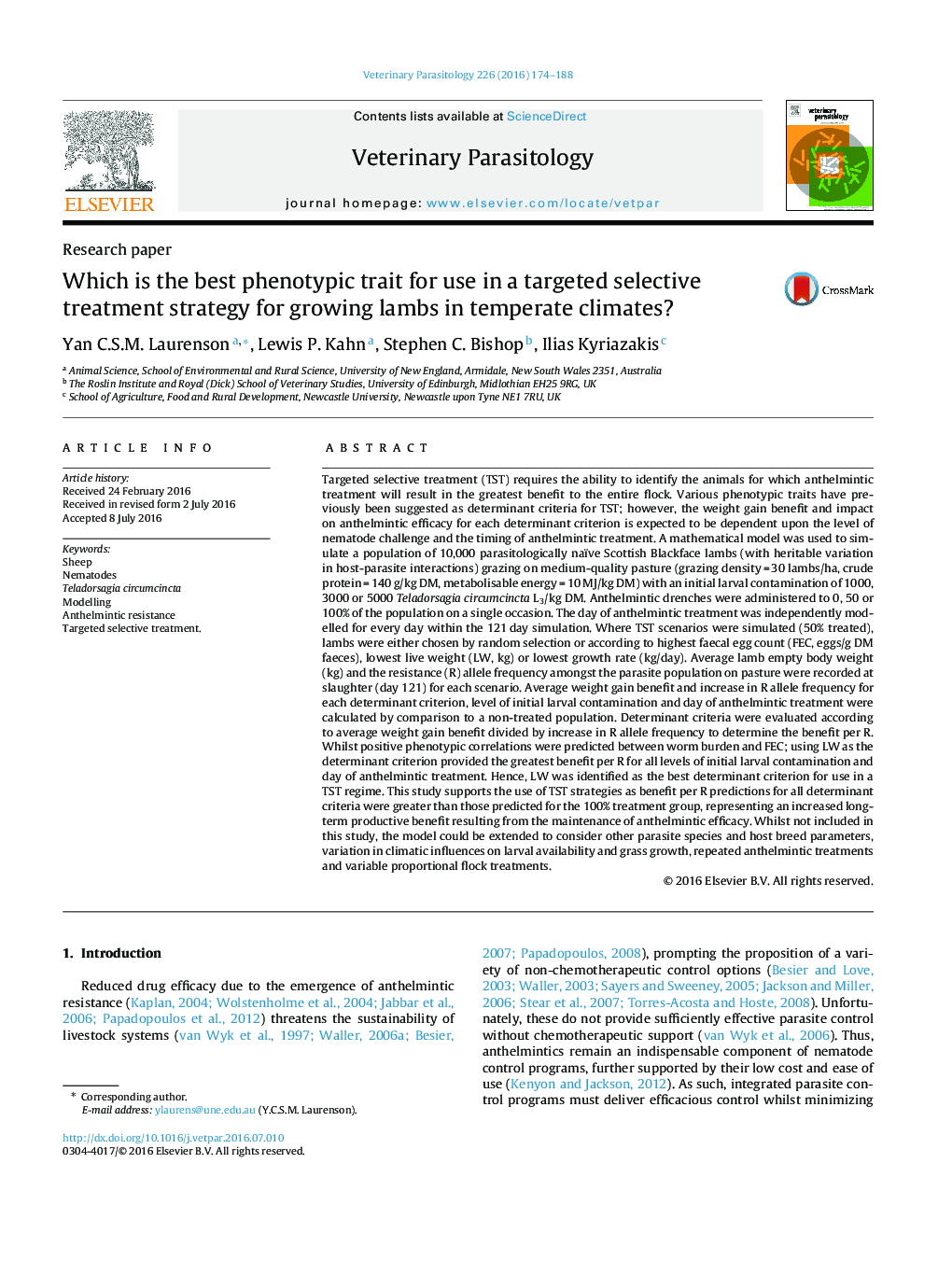| کد مقاله | کد نشریه | سال انتشار | مقاله انگلیسی | نسخه تمام متن |
|---|---|---|---|---|
| 5802029 | 1555650 | 2016 | 15 صفحه PDF | دانلود رایگان |
- Simulated evaluation of phenotypic traits determining targeted selective treatment.
- Investigated the impact of nematode challenge and day of anthelmintic treatment.
- Best criteria was live weight (productive benefit per increase in drug resistance).
- Identified the long-term productive benefit of targeted selective treatment.
Targeted selective treatment (TST) requires the ability to identify the animals for which anthelmintic treatment will result in the greatest benefit to the entire flock. Various phenotypic traits have previously been suggested as determinant criteria for TST; however, the weight gain benefit and impact on anthelmintic efficacy for each determinant criterion is expected to be dependent upon the level of nematode challenge and the timing of anthelmintic treatment. A mathematical model was used to simulate a population of 10,000 parasitologically naïve Scottish Blackface lambs (with heritable variation in host-parasite interactions) grazing on medium-quality pasture (grazing density = 30 lambs/ha, crude protein = 140 g/kg DM, metabolisable energy = 10 MJ/kg DM) with an initial larval contamination of 1000, 3000 or 5000 Teladorsagia circumcincta L3/kg DM. Anthelmintic drenches were administered to 0, 50 or 100% of the population on a single occasion. The day of anthelmintic treatment was independently modelled for every day within the 121 day simulation. Where TST scenarios were simulated (50% treated), lambs were either chosen by random selection or according to highest faecal egg count (FEC, eggs/g DM faeces), lowest live weight (LW, kg) or lowest growth rate (kg/day). Average lamb empty body weight (kg) and the resistance (R) allele frequency amongst the parasite population on pasture were recorded at slaughter (day 121) for each scenario. Average weight gain benefit and increase in R allele frequency for each determinant criterion, level of initial larval contamination and day of anthelmintic treatment were calculated by comparison to a non-treated population. Determinant criteria were evaluated according to average weight gain benefit divided by increase in R allele frequency to determine the benefit per R. Whilst positive phenotypic correlations were predicted between worm burden and FEC; using LW as the determinant criterion provided the greatest benefit per R for all levels of initial larval contamination and day of anthelmintic treatment. Hence, LW was identified as the best determinant criterion for use in a TST regime. This study supports the use of TST strategies as benefit per R predictions for all determinant criteria were greater than those predicted for the 100% treatment group, representing an increased long-term productive benefit resulting from the maintenance of anthelmintic efficacy. Whilst not included in this study, the model could be extended to consider other parasite species and host breed parameters, variation in climatic influences on larval availability and grass growth, repeated anthelmintic treatments and variable proportional flock treatments.
Journal: Veterinary Parasitology - Volume 226, 15 August 2016, Pages 174-188
